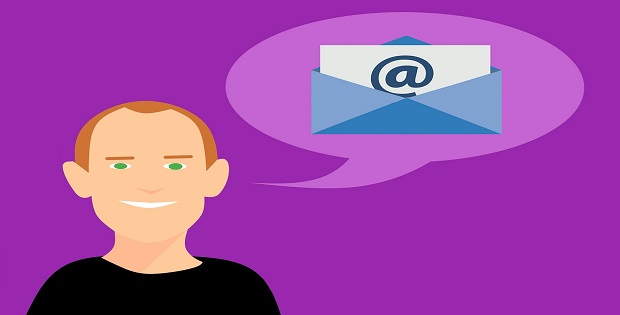What To Do With Phishing Emails: Avoid Data Breaches
Last Updated on 1 year by Touhid
If you fall victim to a phishing attack, then there’s a high chance of data breaches involving your personal data which can be quite dangerous. Phishing emails are one of the most common ways hackers use to hack to attack your system. In this post, we’ll give you important tips on what to do with phishing emails.
If you notice any unusual email from an unrecognized email that comes with any attachments, you should always avoid opening them for your safety.
This is just one of the ways to protect yourself from phishing attempts, and there are many more. So, keep on reading to know more.
Table of Contents
What Are Phishing Emails?
Attacks using phishing techniques are becoming increasingly frequent and complex. Threat actors are always coming up with new ways to fool users into divulging private information. Emails are one of the most often used platforms for Phishing.
Phishing emails are fraudulent emails sent by hackers pretending to be trustworthy organizations or people in an attempt to deceive recipients into disclosing private information such as login passwords, bank account information, or confidential data.
A successful attack often contains a link that takes you to what appears to be a legitimate website and requests personal data. But the website is a hoax, and the data you provide is sent straight to the hackers.
Additionally, these emails can also contain attachments, and as soon as you download them, malware like spyware gets installed on your computer and as a result, hackers can spy on your device stealing confidential information.
How To Identify Phishing Emails?
What to do with phishing emails if you receive that email from hackers? Can you identify the phishing email?
Sometimes, it can be quite difficult to differentiate a legitimate email from a phishing email due to the covering techniques used by hackers. However, there are a few common techniques that you can look for when you receive emails from unknown sources.
Spelling and grammar mistakes
Even though hackers try to act legit and write emails very carefully, you will often notice grammar and spelling mistakes in the emails. In order to get past spam filters, certain scammers purposefully use misspelled phrases. They do this to make their mistakes seem less suspicious.
Check the domain
Often, phishing emails come from various domain names rather than personalized emails. If you are not careful, you can make the mistake of thinking of these domains as real ones.
Scammers try to get a domain name closer to that of a real one. For instance, their domain can be “realife” whereas the real one would be “reallife” so at first glance you can ignore this slightest mistake and end up trusting the email.
Emergency Alert
Any kind of urgency to click or open something right away raises red flags. Any call for urgent action from an unknown sender should cause you to stop, whether it is in the form of a reward promise or a warning about potential penalties.
Asking for Private info
Phishing efforts frequently ask for passwords, account details, usernames and passwords, and private or financial information. Usually, these requests appear as authentic attempts to update account details or confirm identification.
Providing such private data requires caution, especially in response to requests that seem dubious or unsolicited.
What To Do With Phishing Emails?
By now, you should have a proper idea of how to identify phishing emails, but things can be confusing when you actually receive a phishing email. So, keep on reading to learn what to do if you get a phishing email.
Do not download any attachments
Phishing emails will often have links or attachments and you should never open them. As soon as you download the attachments or visit the site linked to the email, there’s a high chance for all of your private data to be hacked by the scammer.
Avoid providing private info
One of the major ways scammers hack into financial credentials is by acting like a bank where they ask for sensitive information like your password, credit card details, and more.
Do keep in mind that banking works by using encryption techniques where none of your sensitive data can be accessed by any employee of the bank. So, they will never ask for information like this.
What to do if you receive a phishing attempt? If you receive this type of email and ask for your credentials for an update to the system. Directly contact the bank or your financial institution before putting on any info.
Report the email
Report any phishing effort you come across to the appropriate authorities right away. If the email is connected to work, notify your IT staff in accordance with your company’s established protocols. This can entail sending the message to the security team or filling out a form.
When using private email accounts like Google or Yahoo, make use of the reporting tools that the email provider offers. The majority of email service providers give a simple method for reporting phishing right from your inbox.
Swift reporting helps in taking necessary measures to prevent potential security breaches.
Verify the email
What to do about phishing emails? If you get an email that seems to be from a trusted source and asks for private information, then you should verify that beforehand. To confirm the legitimacy of the email, use legitimate means to get in touch with the sender, such as the company’s website or a phone number from a reliable source (not included in the email).
Avoid utilizing the bogus contact information that phishers frequently include in the email body or signature as it may result in more fraud.
Ask for help from an expert
In case you cannot be certain whether you have received a phishing email, you can get help from experts. You can either ask your friends or family who understand the concept of phishing emails, or you can also consult IT experts to help you identify potential phishing attempts.
Protect Yourself If You Fall For Phishing Emails
Often solely due to our carelessness, we often end up opening phishing emails giving hackers access to our data. Before this becomes serious, you must take preventive steps to minimize the damage.
Disconnect from the Internet
During a phishing attack, the first thing you must do is disconnect your device from the internet. When malware penetrates a system, it can spread to other systems and devices on the network via network connections.
As a result, disconnecting your device from the internet and any associated networks is critical to preventing malware from spreading throughout your system. This measure drastically reduces the likelihood of malware reaching or harming other network devices.
Change password
Change your passwords immediately as hackers now have access to our passwords, you must change all your passwords. While changing passwords make sure the passwords for all the accounts are different.
If you mistakenly downloaded any attachments from an illegitimate source, then make sure to change the passwords from a different device. This is because attachments often contain spyware so even if you change the passwords the scammers can easily get the new one.
Inform Authorities
In case you become a victim of phishing, inform the associated authorities as soon as possible. If you are using a work email and device, report it to the IT team so they can take care of it.
However, in case of theft of banking details, consult your banking admin ASAP without wasting any time so they can take the necessary steps and freeze your account’s credit until the problem has been fixed.
Delete any unwanted Download
If you downloaded files from a phishing email, don’t open them since they might include malware that compromises your private details or data access. Look for indicators of infection, such as decreased device performance, unexpected browser openings, or abnormal behavior.
Also, change your passwords and stay disconnected from the internet till you make sure that your device is no longer under attack.
Stay Updated
If your operating system has been infected by a malicious application, update all software to the most recent versions and run a thorough virus check. Additionally, while your computer is not in use, turn it off to prevent hackers from gaining illegal access.
Delete the phishing Email
What to do with phishing emails? Lastly, you must block that specific phishing email permanently or else you run the risk of opening it up by mistake leading to a massacre in your computer network system.
Expert Tips And Tricks To Avoid Phishing Emails
Following a few tips and tricks can help you avoid future phishing emails which can work as a great barrier to protect your data.
- Always keep your system updated and run antivirus scans routinely.
- When you’re sent to a website, look for “https://” and a padlock icon in the URL bar to confirm it’s safe.
- Conduct training to keep yourself and your employees updated about phishing attempts and how to prevent them.
- To add an extra degree of protection to your accounts, use two-factor authentication whenever it is available.
- Use paid tools that can filter suspicious emails and notify you about the risks of opening it.
- Communicating to or calling the sender of a phishing email is not recommended. Scammers may gain access to your information if you respond or engage in any manner.
FAQs
If you are still having some questions about what to do with phishing emails, then our FAQs below will help you find the answers.
Can I reply to emails requesting immediate action or giving rewards?
Emails urging you to respond quickly or promising unexpected benefits are frequently warning signs for phishing efforts. Before taking any action, it is essential to be very careful and independently check the authenticity of such demands.
Is it wise to delete phishing emails?
Yes, you can delete and report a phishing email, since most email providers allow this option. You may also label this phishing email as spam, which will send it to the spam folder. If you get additional emails from this address in the future, the spam filter will know not to let them into your inbox.
Can I forward phishing emails to others?
Technically, yes, it is possible to forward phishing emails to others, but it is not recommended. This may accidentally promote the phishing attempt, and someone may open this email by mistake. Instead, notify your email provider or the appropriate authorities.
Conclusion
You should never open email attachments or external website links sent through emails by unknown sources. Additionally, phishing attacks can turn out to be quite serious leading to huge financial losses so in case of these types of attacks you should report to the associated authority at instant.
Additionally, perform routine security audits in your company to find out any existing malware in the system and remove it. In this post, we have suggested some important tips on “what to do with phishing emails”, hope it will protect you from phishing attacks.







